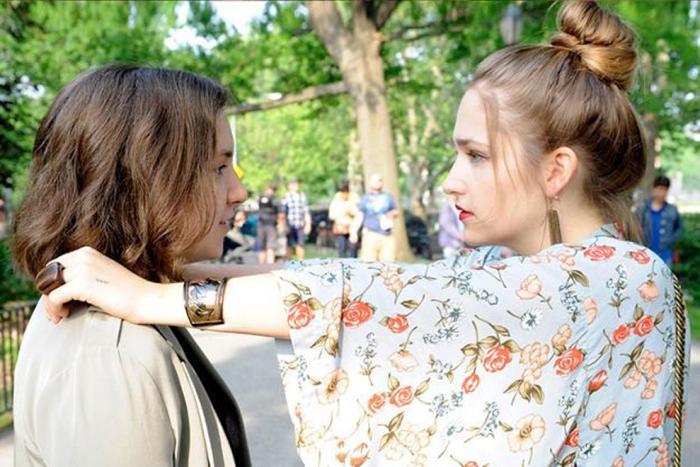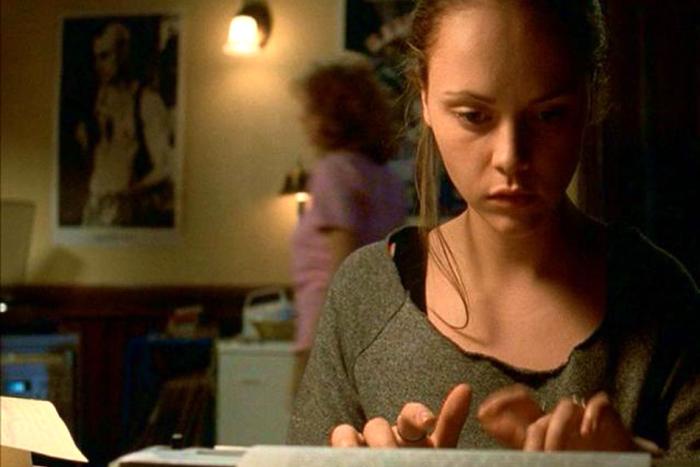Say I were to walk out of my New York apartment tomorrow morning and find myself decimated by a non-domestic terrorist strike. Say I were, by some hand of a god I don’t believe in, to have the vantage point of the afterlife. Would I be said to have died an “innocent victim?” Yes. Would I say this? Not really. I would have spent 27 years benefiting from the same power structures that leave other places, other people, indentured and bereft. I’d have chosen to live in the cultural capital of a neocolonial empire. I would, to some uncertain degree, victim-blame myself.
Say however that my kid sister were killed by terrorists, while I stayed alive.
I imagine I’d feel differently.
This is the morally shifty ground covered with such unsettling ease by Zero Dark Thirty, the new Kathryn Bigelow film that follows a C.I.A. agent (Jessica Chastain) on the ten-year-long trail of Osama Bin Laden, compressed into two-and-a-half hours during which you never once hear her say “God” or “country,” only “a lot of my friends have died” and “I believe I was spared so I could finish the job.” Spoiler alert: The job is finished. The controversy over who did that job and how and why is just beginning, and, if we can settle the whole torture thing, we might even get to the good questions.
Granted, that’s a weighty “if.” Within a week of its opening in New York and Los Angeles, there were days worth of (otherwise positive) reviews and (often hasty) thinkpieces condemning Zero Dark Thirty’s depictions, alleged glorifications, and presumed justifications of brutal torture at C.I.A. black sites.
There was a reminder from acting C.I.A. director Michael Morell that “Zero Dark Thirty is not a documentary,” which might be helpful for those who also believed Liz & Dick was an episode of Inside the Actor’s Studio.
There was a letter from Senators John McCain, Dianne Feinstein, and Carl Levin to the effect that they’re not mad at Zero Dark Thirty, they just feel “deep disappointment.” Senators McCain, Feinstein, and Levin have “reviewed C.I.A. records,” so they “know” that “the C.I.A. did not first learn about the existence of the Usama bin Laden courier from C.I.A. detainees subjected to coercive interrogation techniques.” Senators McCain, Feinstein, and Levin find Bigelow’s cinematization of these techniques and their results to be “grossly inaccurate and misleading,” with the “potential to shape American public opinion in a disturbing and misleading manner,” and since Senators McCain and Feinstein both voted for the war in Iraq—presumably after performing a similar “review” of C.I.A. intelligence that turned out, later, to be false—I hope they included return addresses.
Senators, however, aren’t the only ones concerned with torture approval ratings. They’ve found allies in the good left-ish critics of the New York Times and The New Yorker and Salon and Slate, many of whom have spent a great many minutes worrying about how “Americans” (people who live in parts of the United States that are not New York or Los Angeles) might process and interpret these purgatorial, or purgative, scenes. Their furor, like that of the senators, rests on a perception that, in the plot of a film described by Bigelow and screenwriter Mark Boal as “journalistic,” the harrowing torture of detainees (mostly, one detainee) extorts information that leads directly to the capture and killing of Osama bin Laden.
Writes Frank Bruni, probably the widest-read propagator of this dull point: “The explicit detail with which all of this is depicted could, I suppose, be read as the moviemakers’ indictment of it, and to some extent Zero Dark Thirty will function as a Rorschach test, different viewers seeing in it what they want to see. But the torture sequence immediately follows a bone-chilling, audio-only prologue of the voices of terrified Americans trapped in the towering inferno of the World Trade Center. It’s set up as payback.”
Payback? In the Bush era? Well, I hope this isn’t the first time someone has informed Frank Bruni that the terrorist-huntings undertaken immediately following 9/11 were perhaps motivated by nationalistic revenge.
“No waterboarding, no Bin Laden: that’s what Zero Dark Thirty appears to suggest,” continues Bruni, in a much-quoted, little-considered line that happens to miss the thing entirely.
Bruni, and The New Yorker’s Richard Brody, and the rest of Bigelow’s numerous smart detractors may not be seeing it wrong; in a linear narrative, each action does “appear” to directly influence the next. They are seeing it backwards. They’re working from the final assumption that Bigelow and her audience endorse the result of Maya’s actions, and thus, will endorse whatever means seem to have been necessary.
Meanwhile, Bigelow’s line of defence goes nowhere. In interviews, both she and Chastain argue that Maya and her colleague get their lead not by torturing a key detainee, but by sitting him down with some hummus and a nice mind-trick. Sure, but that’s pretty fucking specious. Non-torture that only succeeds as a relief from months and months of torture is torture still.
And yet—what if the best use of torture in Zero Dark Thirty, and our best reason for enduring its depiction, is to complicate our picture of the “good guys?”
Then Bigelow needs no defence. Let Quentin Tarantino make torture porn in the form of a black-and-white morality tale, let Dick Wolf write your revenge dreams. Kathryn Bigelow, in both Hurt Locker and Zero Dark Thirty, shoots war photography in the perfect guise of a procedural drama, and despite these best efforts, remains the artist who studied semiotics and called Susan Sontag a peer, the artist who wants to make blockbusters, but who had the lowest-grossing film to ever win an Oscar.
And although Bigelow, now 61, tends not to call herself an artist, she’s almost been forced to admit it. “I thankfully want to say that I’m standing in a room of people who understand that depiction is not endorsement, and if it was, no artist could ever portray inhumane practices,” she told the New York Film Critics Circle awards show audience Monday night, while accepting the award for Best Director.
This morning, when 85th Academy Award nominations were announced, Kathryn Bigelow was not on their Best Director list. Hollywood is rather less understanding. Then again, the Oscar doesn’t usually go to the film with the most art.
Art, said George Saunders in his big 2007 essay on Kurt Vonnegut, is “a kind of black box the reader enters.” He could also have said the viewer. “What’s important is that something undeniable and nontrivial happens to the reader between entry and exit. The black box is meant to change us.”
Bigelow, as the artist, knows it is her responsibility not to provide answers, but to frame questions. To change not the world, but the audience.
“To shoot the audience,” as the artist Jill Magid once said, “or bring them to a funeral.”
Magid, a 39-year-old, Brooklyn-based interdisciplinary artist, said this in reply to a collector who urged her to make “poppy” work, to “really catch” her audience. It was Hollywood advice, and like Bigelow, she ignored it. She’d already planned her 2010 Whitney Museum show, in which she staged the sick possibilities of a Bush-era memo on torture, asking: What is a reasonable man in a box? She had also spent a year studying the habits of Dutch spies, and although the Dutch Secret Service had commissioned the work, they did not like how it turned out, and confiscated it. Her next project, begun in Austin, Texas, would be 2011’s Failed States.
When I read Michael Morell’s reminder that “Zero Dark Thirty is not a documentary,” I remembered Magid, and because Bigelow cannot or will not reveal much about her process or motivations, I re-read Failed States, trying to understand how or why an artist might become a journalist.
I remembered the Civil War photographer Mathew Brady, the way Susan Sontag describes his project—”nominal government sponsorship giving way to the force of entreprenuerial and freelance motives”—in Regarding the Pain of Others. The camera is the eye of history. Brady said that.
“People say that a journalist does his job because he wants to communicate the story,” Magid writes, but she doesn’t believe it. Neither does Chris Tomlinson, the ex-AP war correspondedent-cum-editor of the Texas Observer. He is training her to “embed” in Afghanistan.
“You want to see it for yourself,” says Tomlinson. “We want to understand it”—he waves a finger back and forth between Magid and himself—”as an eyewitness.”
Magid did not go to Afghanistan, because unlike Bigelow, like Maya, she was married with a child. Besides, she was already an eyewitness, having watched in Austin, Texas, a non-fatal shooting outside the courthouse. The shooting that made her fascinated with the 24-year-old shooter, with shooters at large, with terrorists and what “terrorist” means.
As Magid once said, in a Tate Modern video on her work with the Dutch Secret Service: “Is that a spy? Is that a spy? This is something I love, because in our society it’s very easy to say us and them. But us and them are almost the same people, with the same confusions and desires and question and so this interchangeability of who’s the watcher, who’s the observer, who’s the statistic, who’s the terrorist?”
In Zero Dark Thirty, there is no obvious interchangeability. The audience is embedded, with Maya, seeing everything she sees and nothing else.
“In that sense, it’s very subjective,” Bigelow told Amy Taubin in the January issue of Artforum. “You’re at the epicenter of that hunt with her, experiencing all the triumphs and the frustrations and the sort of bureaucratic hurdles that you have to push through. You’re in that Pakistani marketplace. You’re trying to find that house. You’re trying to get the phone number for a certain name—through whatever means available to you.”
The technique is the intent. Bigelow shoots in the dark but she accidentally or not shines a light, and the light shines on us. You, the audience member, the American or the North American or the Western who thinks you only observe, you are there. You might have been the statistic, but now you’re also the spy. You are also the torturer, or by another name, the terrorist. In electing and participating in a system which relies on covert operations, on intelligence that turns out to be false, on methods that are revealed to be war crimes, and that are not the aberration but, as Philip Gourevitch and Errol Morris nearly proved, standard operating procedure, you are not the good guy. Maya is not the good girl. I’m not.
If Zero Dark Thirty is the most emotionally withholding film of the year, it is also the most intellectually demanding, and the best. It is a triumph, but it’s not about a victory. Recall that Bigelow wanted to make a movie about the failure to capture bin Laden, before the whole world knew, as she puts it, that he’s dead. Consider that she has still made a movie about a failure, a moral failure, our failure, embedded in a procedural success. Consider that final shot: Antipodal to the black-screen screams of 9/11 victims that open the film, we get at last Maya’s tears, shed too late and alone.
Do you know why she is crying isn’t the question.
The question is why you are not. What can you do.
In the film’s first, merciless scene, her first interrogation, our first test, Maya won’t cry but looks like she might. Her colleague, the dude with the dog collar and a PhD, sees her face. He offers her an out.
“There’s no shame in watching from the screen,” he says.
Oh, but there is.






